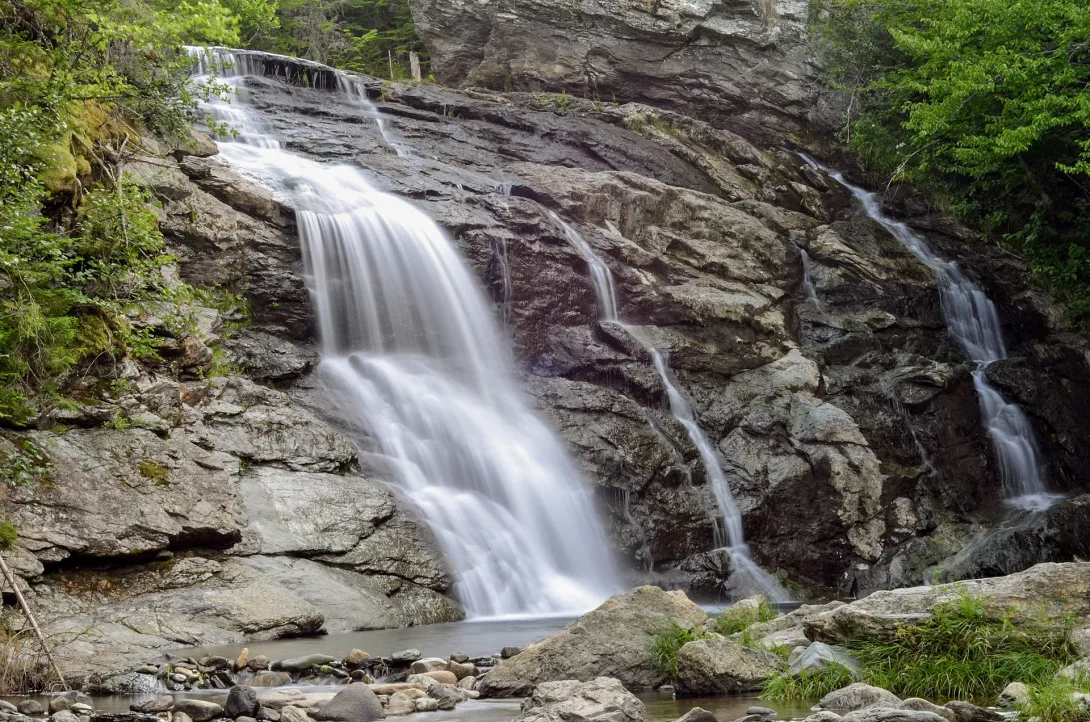The United States is home to a diverse array of national parks. Each one offers a unique blend of natural beauty, wildlife, and outdoor activities.
From the geysers of Yellowstone to the towering cliffs of Yosemite, these parks are a testament to the country's rich natural heritage. They provide a haven for nature lovers and outdoor enthusiasts alike.
But with so many parks to choose from, where should you start? This guide will help you navigate the top 10 national parks to explore.
Whether you're planning a trip in May or looking for a winter adventure, we've got you covered. We'll highlight the best times to visit and what makes each park special.
So, let's embark on this journey together. Discover the wonders of America's best national parks and the invaluable work of the National Park Service.
Why Visit National Parks?
National parks are treasures that offer a break from the hustle of daily life. They provide a chance to immerse yourself in the splendor of nature. These parks host diverse landscapes, from dense forests to rugged mountains, offering an escape into wilderness.
Visiting national parks is an opportunity to witness breathtaking scenery. Whether you're standing at the rim of the Grand Canyon or among the giant sequoias of Yosemite, these experiences are unforgettable. Each park tells its own story through its unique features.
Outdoor activities abound in national parks, appealing to thrill-seekers and relaxation seekers alike. Hiking trails, wildlife viewing, camping, and scenic drives ensure there's something for everyone. Each visit is an invitation to connect with nature in meaningful ways.
Beyond recreation, national parks are vital for education and conservation. They offer insight into ecosystems and the importance of protecting them for future generations. The National Park Service plays a crucial role, ensuring these lands remain pristine for all to enjoy.
The National Park Service and Conservation
The National Park Service (NPS) plays a vital role in protecting America's natural wonders. Established in 1916, it manages over 400 sites, preserving landscapes, wildlife, and historical artifacts. Its mission is to conserve these resources for future generations while providing public enjoyment.
Conservation efforts within national parks are crucial for maintaining biodiversity and ecological health. The NPS implements programs to protect habitats, manage wildlife, and restore ecosystems. These efforts ensure that national parks remain untouched sanctuaries of nature, offering diverse environments for visitors to explore.
The NPS also focuses on education and outreach, raising awareness about the importance of conservation. Through programs, tours, and collaborations, it educates the public on responsible park usage and environmental stewardship. The NPS strives to engage visitors in preserving these landscapes, fostering a shared responsibility for protecting our natural heritage.
1. Yellowstone National Park
Yellowstone National Park is a remarkable expanse of geothermal wonders and diverse ecosystems. Established in 1872, it is America's first national park and a global model for conservation. This UNESCO World Heritage site spans over 2 million acres across Wyoming, Montana, and Idaho.
Visitors flock to Yellowstone for its iconic geysers, such as Old Faithful, and stunning hot springs like Grand Prismatic Spring. The park also boasts a variety of wildlife, including bison, wolves, and grizzly bears. These natural marvels make it one of the best national parks to visit in the United States.
When exploring Yellowstone, activities abound. Here's what you can do:
- Hike scenic trails with varying difficulty.
- Enjoy wildlife watching and photography.
- Participate in ranger-led educational programs.
- Experience backcountry camping and stargazing.
2. Yosemite National Park
Yosemite National Park is famous for its awe-inspiring vistas, magnificent waterfalls, and giant sequoias. Located in California's Sierra Nevada mountains, it's a destination where nature takes center stage. This park spans over 750,000 acres and offers a unique escape into the wild.
The beauty of Yosemite is captivating year-round. Visitors can explore its diverse landscapes, from the towering El Capitan and Half Dome to lush meadows and ancient sequoia groves. It's also a paradise for photographers, providing countless opportunities to capture the beauty of nature.
For those visiting Yosemite, consider these activities:
- Visit Yosemite Falls, North America's tallest waterfall.
- Explore Mariposa Grove's giant sequoias.
- Hike the Mist Trail for panoramic views.
- Attend ranger-led talks and guided nature walks.
3. Grand Canyon National Park
Grand Canyon National Park is an iconic destination, celebrated for its immense size and beautifully intricate landscapes. Located in Arizona, this geological wonder stretches over 277 miles with depths reaching over a mile. Each visit here reveals new layers of stunning beauty and adventure.
Whether you're standing at the rim or gazing into the depths, the views are breathtaking. The canyon reveals millions of years of geological history, showcasing colorful rock formations and dramatic vistas. Experiencing a sunrise or sunset from the canyon's edge is truly unforgettable.
Visitors to the Grand Canyon can enjoy a variety of activities, such as:
- Taking a guided tour along the rim.
- Hiking the Bright Angel Trail for exhilarating views.
- Rafting along the Colorado River.
- Exploring visitor centers for insightful exhibitions.
4. Zion National Park
Zion National Park, in the state of Utah, is famed for its majestic sandstone cliffs and narrow canyons. Its vibrant red and pink cliffs attract photographers and nature lovers from around the world. These towering formations create a sense of awe as you enter the park's scenic drive.
The park offers a myriad of exploration opportunities, from easy hikes to more challenging adventures. The Virgin River carves through the canyons, offering refreshing sights and sounds. Its diverse ecosystems support a rich variety of plants and wildlife, making each visit unique.
Popular activities in Zion include:
- Hiking the famous Angels Landing trail.
- Exploring the Narrows wading through water.
- Wildlife watching in lush Kolob Canyons.
- Learning at the Zion Human History Museum.
5. Great Smoky Mountains National Park
Great Smoky Mountains National Park straddles the border between North Carolina and Tennessee. It's a haven for biodiversity, home to more than 19,000 documented species. Many more species wait to be discovered in its lush, misty forests.
The park offers visitors a rich tapestry of natural and cultural experiences. The rolling fog-covered mountains provide a magical backdrop for hiking and scenic drives. Historic structures scattered throughout the park provide insight into Appalachian life from centuries past.
Activities to enjoy in the Smokies include:
- Walking along the Appalachian Trail.
- Visiting Cades Cove to see historic cabins and wildlife.
- Exploring Clingmans Dome, the highest point in the park.
- Attending ranger-led programs to learn about local flora and fauna.
6. Rocky Mountain National Park
Rocky Mountain National Park is a breathtaking high-altitude destination in northern Colorado. The park boasts towering peaks and expansive alpine tundra. It offers over 300 miles of trails and awe-inspiring vistas.
The park is home to diverse wildlife and vibrant ecosystems. Elk are commonly seen in the meadows, and marmots sunbathe on rocky outcrops. During different seasons, visitors can enjoy meadows with wildflower blooms or snow-covered trails.
Popular activities in Rocky Mountain National Park include:
- Exploring Trail Ridge Road for panoramic views.
- Hiking Bear Lake Trail for picturesque scenery.
- Capturing photos of the sunrise from the Moraine Park campground.
- Engaging in ranger-led educational hikes for deeper insight into park ecology.
7. Olympic National Park
Olympic National Park, located in Washington State, is a land of diverse ecosystems. From temperate rainforests to rugged Pacific coastlines, its landscapes captivate explorers. The variety of terrains supports an incredible range of flora and fauna.
Visitors can wander through the lush Hoh Rain Forest, where moss-clad trees tower overhead. The park also offers a chance to relax along its wild coastlines. At low tide, vibrant tidepools reveal a hidden world of marine life.
Among the top activities in Olympic National Park are:
- Exploring Hurricane Ridge for panoramic mountain views.
- Enjoying the stunning beaches like Rialto Beach.
- Embarking on a scenic drive along the Pacific coastline.
- Participating in guided nature walks to learn about the park's biodiversity.
8. Glacier National Park
Glacier National Park, known as the "Crown of the Continent," is located in Montana. Its majestic mountain scenery and sparkling lakes create a breathtaking backdrop. The park is home to a shrinking number of the glaciers that gave it its name.
Adventurers can explore over 700 miles of trails, offering a unique look at the park's natural beauty. The Going-to-the-Sun Road is a must-see, providing unparalleled views of the landscape. Its diverse habitats shelter an array of wildlife, from grizzly bears to mountain goats.
Popular activities in Glacier National Park include:
- Hiking the Highline Trail for stunning vistas.
- Wildlife spotting along Many Glacier Valley.
- Enjoying a boat tour on Lake McDonald.
- Camping under the starlit Montana sky.
9. Acadia National Park
Acadia National Park, located on the rugged coast of Maine, offers a diverse mix of scenery. Its landscapes include rocky shores, dense forests, and granite peaks. The park's stunning vistas attract visitors from across the globe.
One of the main attractions is Cadillac Mountain, the highest point on the U.S. East Coast. Visitors flock here to witness breathtaking sunrises. The park is also renowned for its rich history and cultural sites.
Activities in Acadia National Park include:
- Exploring the historic carriage roads on bike.
- Watching the tide pools along the Ocean Path.
- Hiking the Precipice Trail for adventurous views.
- Birdwatching at the Sieur de Monts Spring area.
10. Grand Teton National Park
Grand Teton National Park is a jewel nestled in northwestern Wyoming. It is famed for its striking mountain range and breathtaking scenery. The towering Teton Range offers a dramatic backdrop for visitors.
The park boasts a variety of pristine lakes and diverse wildlife. Activities such as canoeing on Jackson Lake and hiking the trails are popular. Its location near Yellowstone makes it an ideal spot for combined visits.
Highlights of Grand Teton National Park include:
- Exploring the scenic Jenny Lake.
- Spotting moose and bison in the park's meadows.
- Enjoying the panoramic views from Signal Mountain Summit.
- Photographing the towering peaks from the Snake River Overlook.
Best Times to Visit National Parks
Choosing the right time to visit national parks can enhance your experience dramatically. May is ideal for many parks as it offers mild weather and fewer crowds. Springtime blossoms provide vibrant landscapes in various parks.
Winter, on the other hand, presents a peaceful and snowy charm in parks like Yosemite and Yellowstone. Each park has its unique seasonal highlights. Regardless of the season, prepare adequately to make the most of your visit.
Consider these factors for planning:
- Park activities vary by season and accessibility.
- Seasonal weather can influence available activities.
- Crowds are typically smaller during off-peak periods.
Tips for Responsible Park Visitation
Visiting national parks responsibly ensures their beauty remains for future generations. Start by adhering to the Leave No Trace principles, which focus on minimizing human impact on nature. This involves being mindful of waste and staying on designated paths.
Engaging in sustainable practices during your visit is vital. Respect wildlife by keeping a safe distance and never feeding animals. Always follow park rules and guidelines for a safe experience.
Consider these tips for a responsible visit:
- Pack reusable items to reduce waste.
- Keep noise levels low to preserve tranquility.
- Report any hazards to park rangers promptly.
Conclusion: Preserving America's Natural Heritage
National parks are integral to America's heritage and natural beauty. They offer serene escapes and foster a connection with nature. Visiting these parks responsibly ensures they remain pristine for future visitors.
Supporting the national park service through conservation efforts helps protect these landscapes and ecosystems. Volunteer opportunities and educational programs encourage public involvement in preservation. By visiting thoughtfully, we contribute to the enduring legacy of America's best idea.



